How can lighting design help us create human workspaces and harmonise spatial functionality? Willow Aliento reports.

Roche Pharmaceuticals designed by Hassell, with lighting design by NDY Light, featuring Sunny Side Up from Light Culture, photography by Nicole England.
September 2nd, 2022
For almost two years many of us stayed home, worked at kitchen tables and focused on our health while in the world’s CBDs brightly lit offices remained empty. In the aftermath of those surreal times, approaches to commercial lighting design are changing to reflect a growing focus on humanising the workplace and harmonising the functionality of space.
Rows of desks under artificial light are a commercial interiors story no one wants to tell anymore. The keywords for space now are flexible, adaptable, welcoming and intuitive. Designers and occupants look for diversity in illumination, while a heightened awareness of the climate cost of energy use boosts the case for intelligent technology that responds to need, rather than spilling unnecessary brightness into uninhabited space.
“Without doubt the global pandemic has caused designers, property owners, and businesses to consider the modern workplace in more detail than ever before,” says Tom Stevens, national sales and marketing manager at Light Culture.
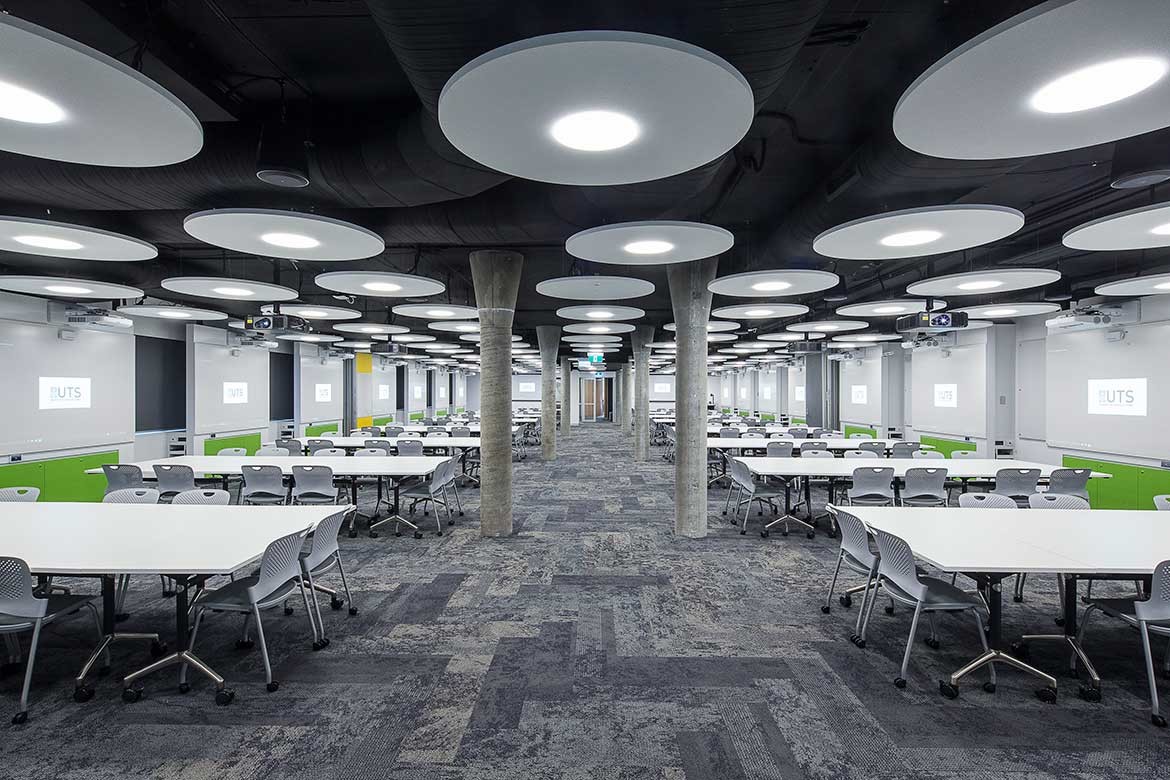
“Rather than being looked at to serve functional purposes alone, modern workplaces are being scrutinised to see how they can better entice workers back in from their home office. In a lighting sense this drive for a better working environment is leading to greater consideration of non-visual needs: How does the lighting make workers feel? How does the lighting influence sleeping patterns? How does the lighting aid concentration?
“While many designers are considering workers’ needs independently, there’s been a rapid increase in demand for the WELL Building Standard as a means to prove a workplace is industry-leading for its workers’ wellbeing.”
Read this article and more in Indesign magazine, issue 86. Purchase your issue here.

Cundall associate and head of Light4 Australia, Bettina Easton, says the most important aspect of lighting design is considering how the space will be used.
Too often, tenants move into a commercial space that is a “warm shell” – with a grid of troffer luminaires already in place that give a maximum uniform brightness to the space. Easton says facility managers and landlords should consider instead only providing the emergency lighting to the base build, and then work collaboratively with tenants to ensure they have an independent lighting designer to design the lighting to suit their people and business.
The standard troffers and uniform illumination were once considered best practice, Easton says, but that’s not good enough for today. Why are we still accepting what was great in the 70s and 80s when workers’ main tasks used paper and pen? The standards have not adapted to the new millennium workplace of illuminated screens and zoom-in capability.
“It is slowly evolving,” Easton says. “Lighting design should be based on how humans feel and how they interact with a space.”
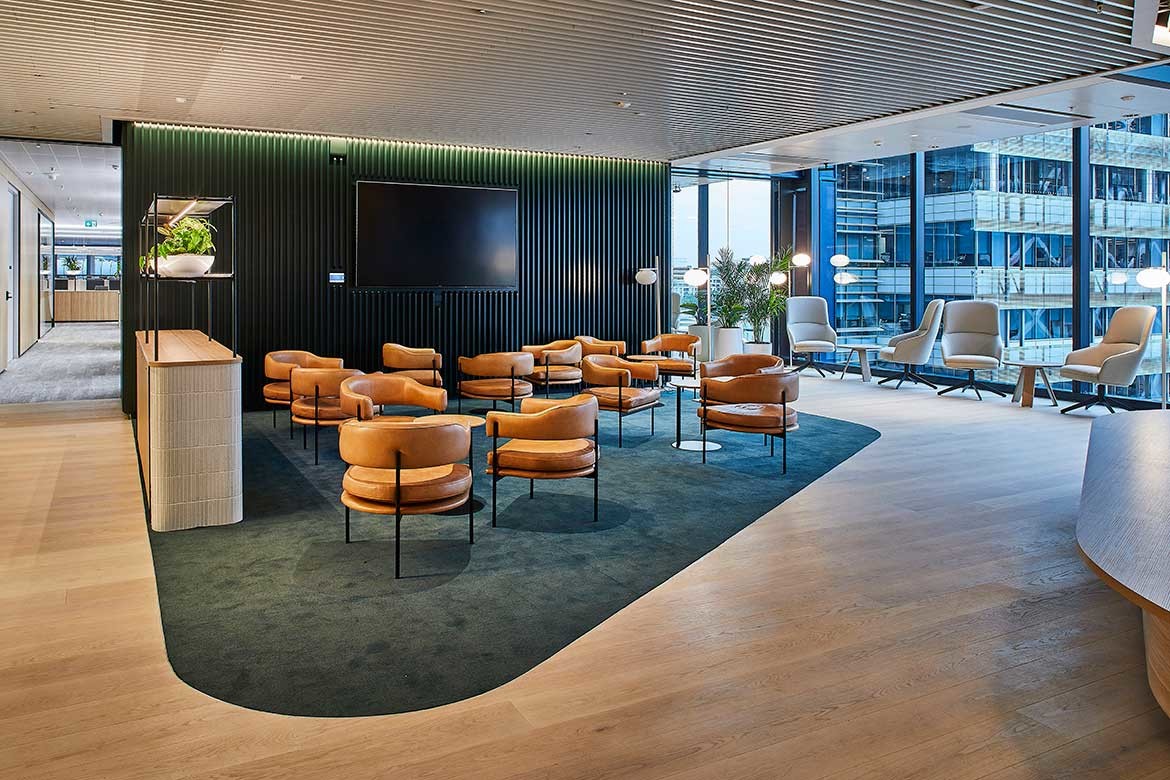
The old uniform style also matched the old-school workplace, with its rows of workstations or cubicles and maybe one circulation or breakout space.
Easton explains that the new interior design for commercial workplaces generally has multiple breakout spaces, areas for huddles or groups of workstations, town hall zones, lounge areas and circulation zones.
Varying the illumination in these diverse spaces means people can move their workstation – their laptop – and shift to a space that suits their needs and specific activity. Lighting design can complement and enhance this, for example, using reflected light off surfaces, accent focused light for interest, wayfinding and task lighting and reduced brightness for circulation and breakout zones.
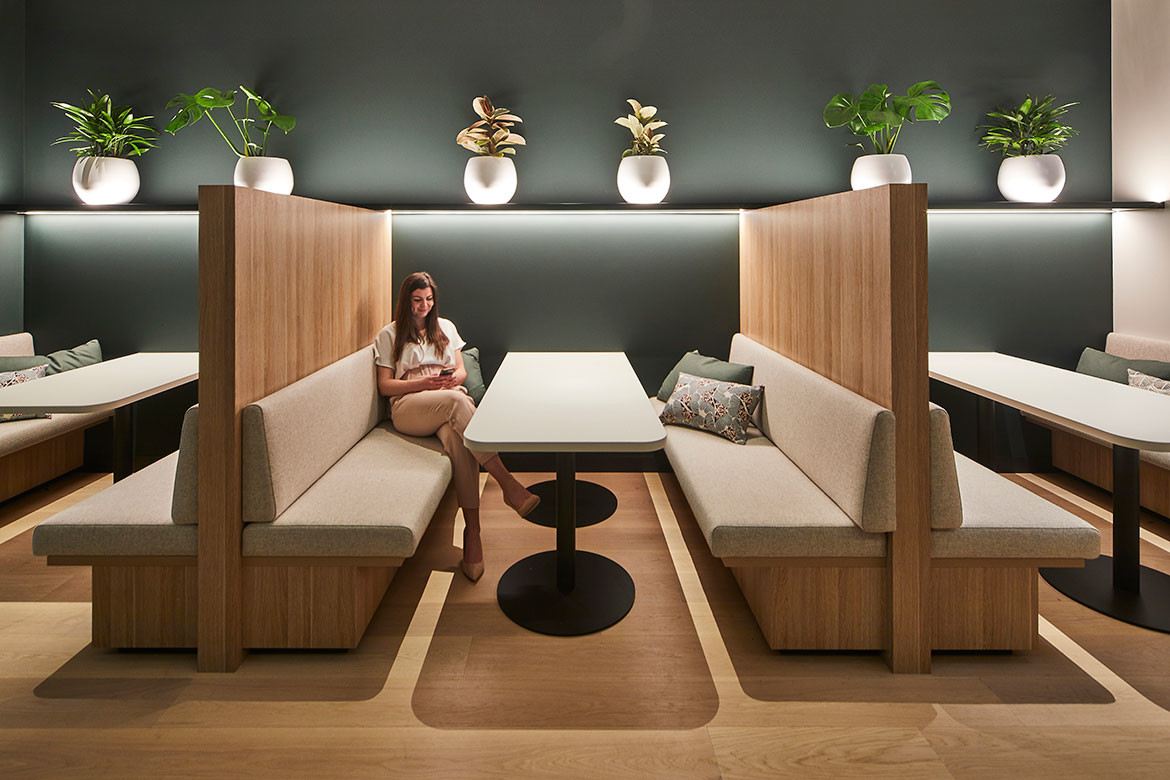
Easton has used this approach in recent projects including the award-winning First Sentier fit-out in Sydney, where lighting signposts activities, elevates the company culture and provides visual beauty to enhance the experience of the office.
“You should light for how the space is used, rather than just the standards,” Easton says. “Unfortunately, most office lighting is dominated by a lighting engineering approach that meets only one task applied across the whole floor plate. This creates a flat bright space that is functional but is devoid of any warmth or interest.”
“The one-size-fits-all doesn’t fit all anymore.” The recent pandemic experience will also have an impact on commercial lighting trends, she believes. Working from home has given people an experience of having daylight access, generally lower levels of ambient lighting, and the use of task lighting such as a table lamp where necessary.

Easton believes many workers returning to a conventionally lit space may find it too bright now. So, it will be important for lighting designers and interior designers to consider how to bring some of that welcoming and comforting sense of “home” into the office through the way they design and specify lighting.
One technology that is vital for managing flexible and low-density spaces is with sensors and lighting control. Easton says that up until recently these were often cut from budgets – particularly as lighting is often the last building system to be installed.
However, as sensors and controls can result in major savings in energy costs, there are other strong cases for them. As we move into agile working and possibly flexible hours, controls will be essential for the health and wellbeing of the staff. For example, luminaires in zones with no workers can be off to reduce wasted energy. As you approach, they increase in brightness gently so there are no visual “black hole effects” in the office. Photosensors can allow the luminaires to respond to the available natural daylight (or lack thereof), and if people are working after standard daylight hours, the luminaires should dim to accommodate the contrast of the darkness outside.
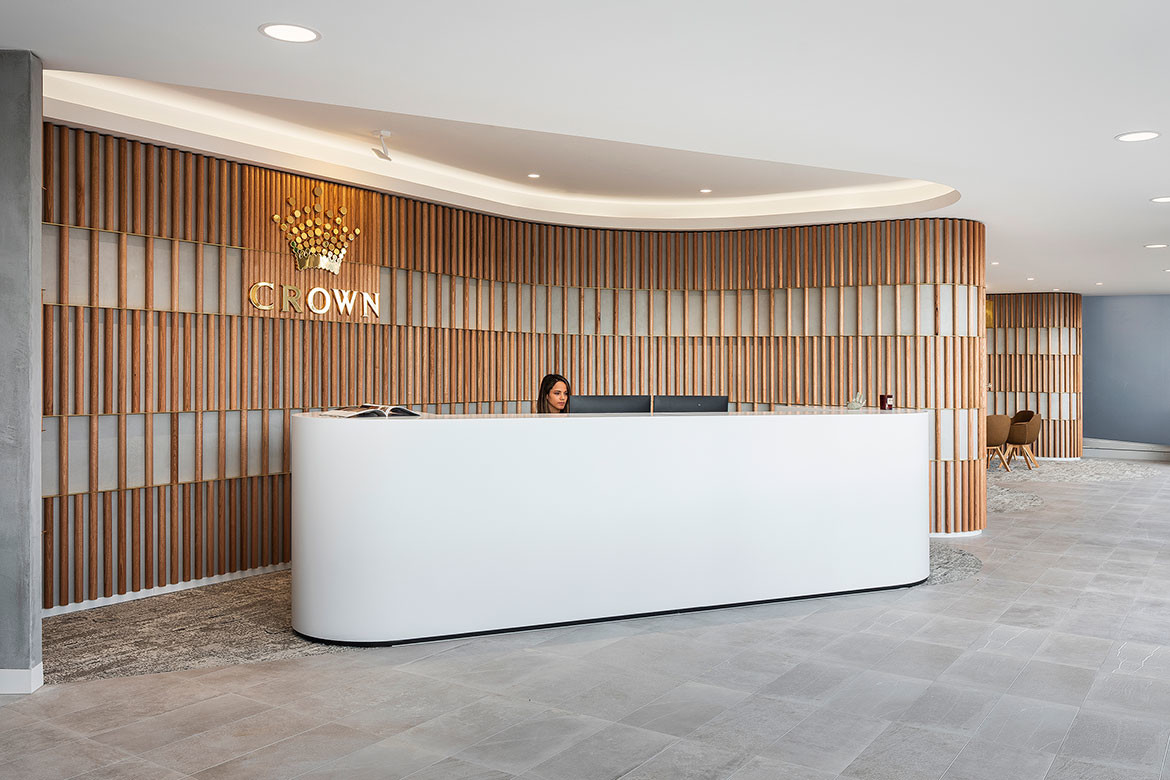
Lighting and spatial planning should always factor in daylight. Easton points out that often the main meetings rooms have daylight access, but these rooms are generally seldom used. It would be more efficient to allocate those to floorspace near the core and allocate the daylit areas to workstations and other tasks where staff will gain the most benefit from daylight and views.
Stevens says there has been a shift in thinking around what “efficiency” means holistically. “Until recently the efficiency of a light source has been a measure of how much light is created with regards to our visual system, but we’re now learning that there are non-visual systems in our bodies that are sensitive to different spectra of wavelengths. Therefore, a modern light source needs to be measured for efficiency over both our visual and non-visual systems,” hey says.
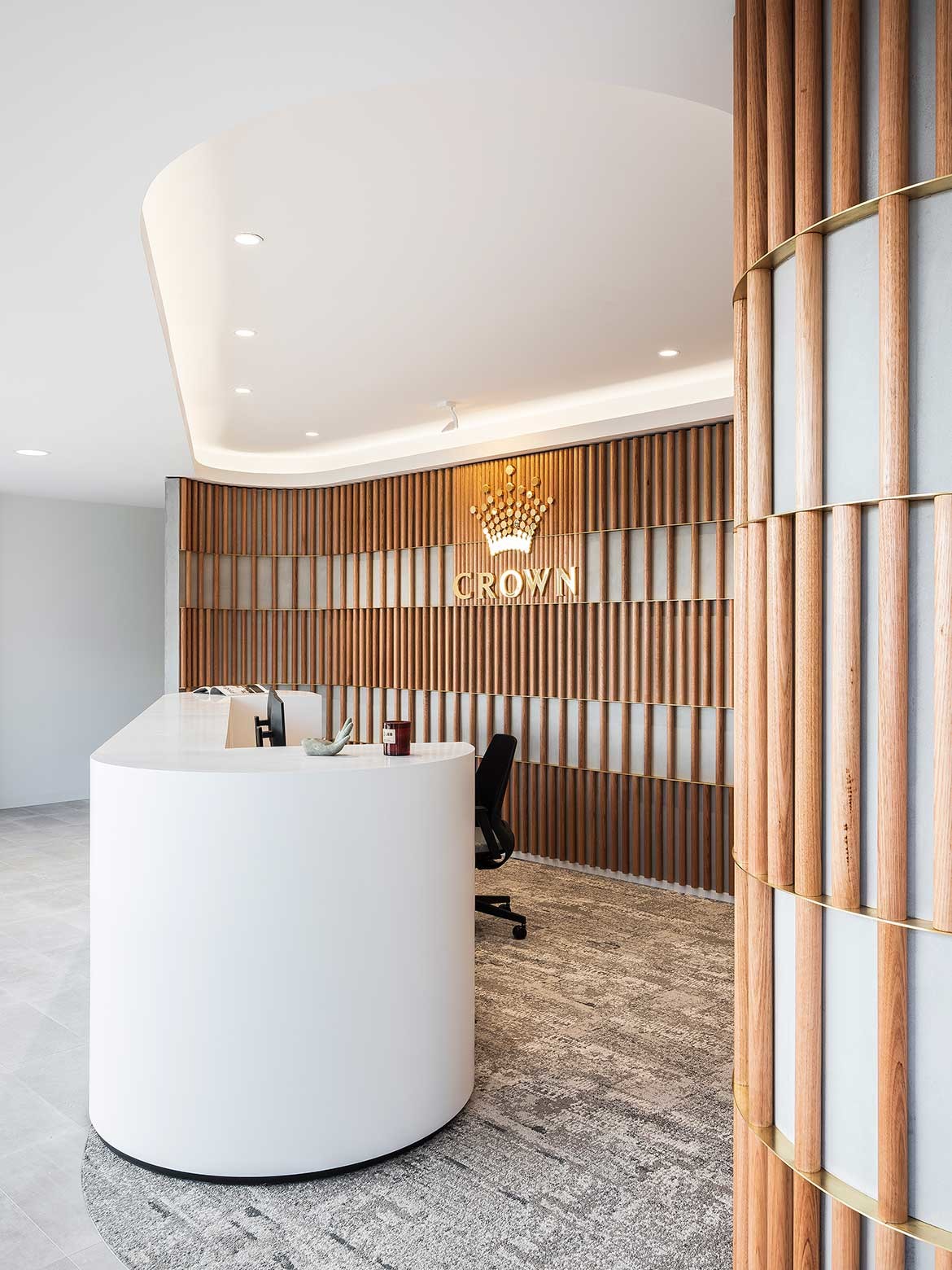
Light Culture is currently working with researchers at the Australian National University (ANU) to explore the non-visual dimensions. It is supplying luminaires with a specially doped light source called Beyond Vision™ to three ANU workspaces.
“The spectrum of this light source has been created to meet both the visual and the non-visual requirements of the workers,” Stevens explains.
The non-visual receptors in the human eye are known as the intrinsically photosensitive retinal ganglion cells, and they are sensitive to different wavelengths of light to the eye’s rods and cones which we use for vision. Beyond Vision LEDs create more stimulation of the ganglion cells than standard light sources with the same colour temperature, to help regulate the production of melatonin in our body and support our day/night cycle.
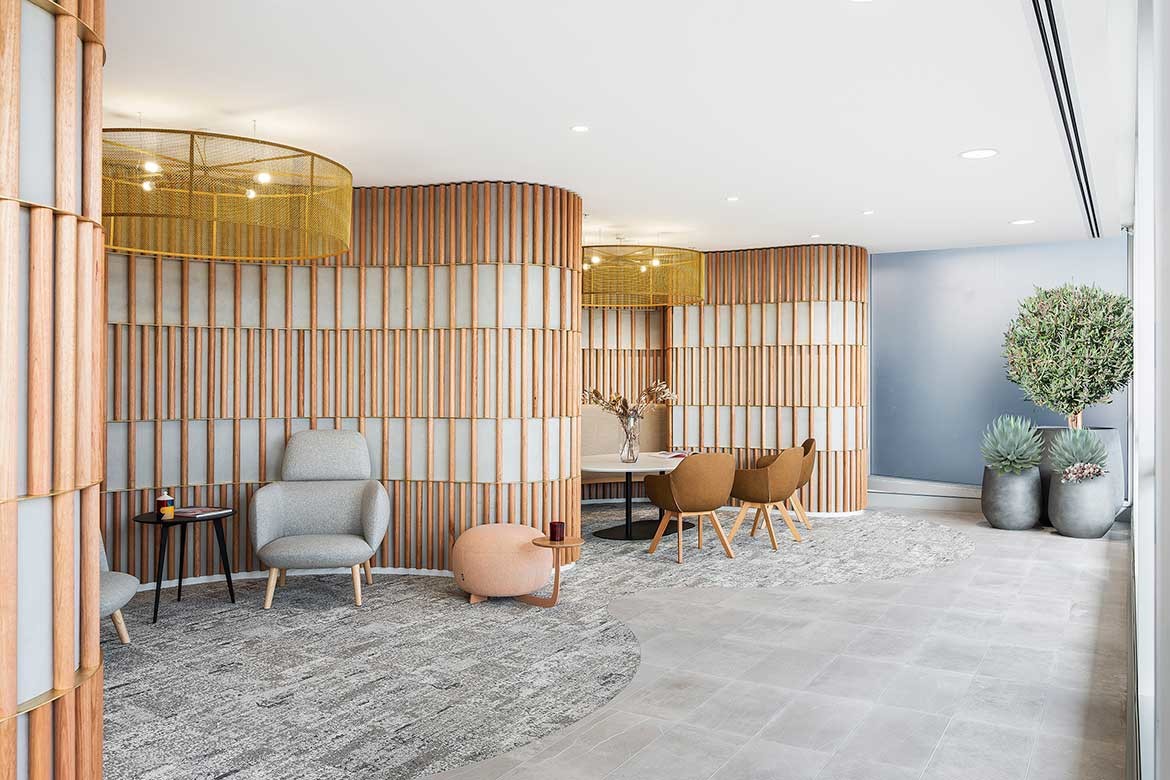
Beyond the functional aspects, Stevens says lighting must equally be considered for its aesthetics. “The application of light should be viewed by designers as a tool to achieve their architectural intent, rather than a necessity to support the function of a space. Effective light planning will ensure that the features of a space are appreciated, and the blemishes are concealed. After all, being ‘seen in our best light’ shouldn’t be an expression used only for humans.”
Easton also advocates for the role of lighting in elevating the quality of space. “Lighting is functional, but it is also like the diamond earrings that bring sparkle and pleasure to a space,” she says. “If designed correctly, it picks up the nuances of textures and colours and expresses depth in the architectural forms.”
This article was featured in Indesign magazine, issue 86. Purchase your issue here.
Cundall
cundall.com
Light Culture
lightculture.com.au
We think you might like this article about Gensler’s new Singapore office.
INDESIGN is on instagram
Follow @indesignlive
A searchable and comprehensive guide for specifying leading products and their suppliers
Keep up to date with the latest and greatest from our industry BFF's!

Sydney’s newest design concept store, HOW WE LIVE, explores the overlap between home and workplace – with a Surry Hills pop-up from Friday 28th November.

At the Munarra Centre for Regional Excellence on Yorta Yorta Country in Victoria, ARM Architecture and Milliken use PrintWorks™ technology to translate First Nations narratives into a layered, community-led floorscape.

In an industry where design intent is often diluted by value management and procurement pressures, Klaro Industrial Design positions manufacturing as a creative ally – allowing commercial interior designers to deliver unique pieces aligned to the project’s original vision.
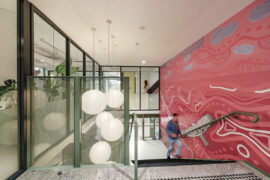
From radical material reuse to office-to-school transformations, these five projects show how circular thinking is reshaping architecture, interiors and community spaces.
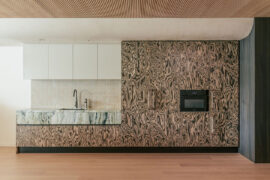
Trust sits at the core of Everton Buildings’ new office, where Ambit Curator was given licence to move beyond convention and deliver a workplace defined by vision, materiality and assured detail.
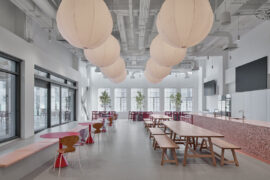
The new headquarters for Omnicom in Melbourne’s CBD sees heritage re-invigorated with style and finesse.
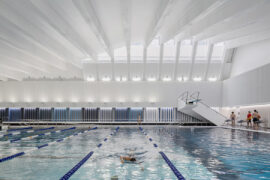
Hiwa, the University of Auckland’s six-storey recreation centre by Warren and Mahoney with MJMA Toronto and Haumi, has taken out Sport Architecture at the 2025 World Architecture Festival. A vertical village for wellbeing and connection, the project continues its run of global accolades as a new benchmark for campus life and student experience.
The internet never sleeps! Here's the stuff you might have missed

Hiwa, the University of Auckland’s six-storey recreation centre by Warren and Mahoney with MJMA Toronto and Haumi, has taken out Sport Architecture at the 2025 World Architecture Festival. A vertical village for wellbeing and connection, the project continues its run of global accolades as a new benchmark for campus life and student experience.
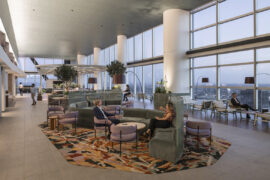
Designed by Woods Bagot, the new fit-out of a major resources company transforms 40,000-square-metres across 19 levels into interconnected villages that celebrate Western Australia’s diverse terrain.